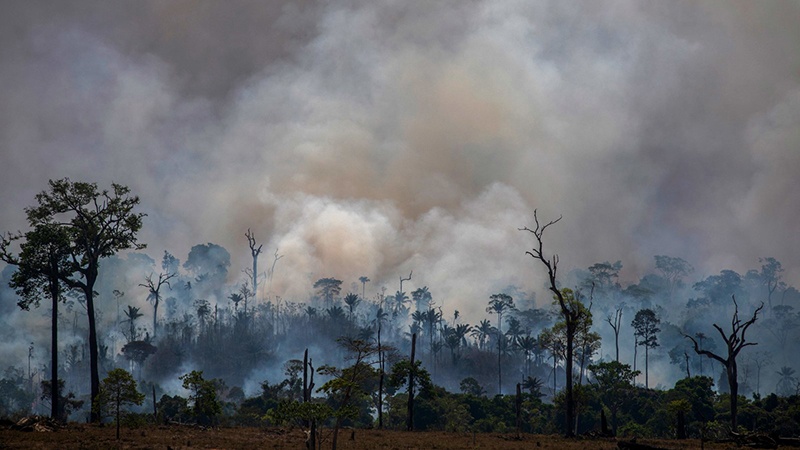

BRASILIA: Deforestation of the Brazilian Amazon and neighboring savannah may be hurting regional corn yields, according to a new study released on Monday. Roughly one-fifth of Brazil’s Amazon has been cleared in the last 50 years, as the country went from being a food importer to a global farming powerhouse. In terms of corn, Brazil is now the world’s second largest exporter, after the United States. But that forest-clearing, which also included more than half of the natural vegetation in the vast Cerrado savanna southeast of the Amazon, has made the region warmer. That heat is associated with lower corn yields, researchers reported in the science journal Nature Sustainability.
"The landscape is getting a lot hotter than it should be,” said study co-author Stephanie Spera, an environmental scientist with the University of Richmond. "We’re messing with the system so much that we actually might not be able to continue to cultivate agriculture, specifically corn.”
The researchers linked the deforestation to a 5-10 percent drop in corn yields across most of the west-central state of Mato Grosso, Brazil’s largest grains producer. Soybean crops, which tend to be more heat-resilient, were not significantly affected, Spera said. Spera and her colleagues used computer simulations to see how various deforestation scenarios impacted local climate conditions and crop yields, and compared those cases with how crops might have fared had no trees been cut down.
The study found that conditions in 2016 included eight more "hot nights” a year, with nighttime temperatures above 24 degrees (75.2 degrees Fahrenheit), than if the forest had remained in tact. Those higher nighttime temperatures can hinder corn’s development.
The researchers also looked into future possible scenarios, including having the entire savanna or southeast Amazon cleared and converted to cropland. In those cases, corn yields were predicted to fall up to 20 percent in some areas of Mato Grosso. The same deforestation that hurts crops could also harm the remaining forest as well. Tree loss can reduce the amount of moisture available to the rain cycle. Some scientists estimate that if just 20-25 percent of the original total rainforest that spans parts of nine countries is destroyed, the Amazon could go into a death spiral, without enough rainfall and moisture to keep it from drying out and becoming a savanna.
"Deforestation interferes with rains and agricultural productivity,” said Raoni Rajao, a professor at the Federal University of Minas Gerais who studies agriculture and environmental policy. Deforestation in Brazil’s Amazon rainforest accelerated to an 11-year high in 2019 of more than 10,000 square kilometers (2.5 million acres), an area more than six times that of London or nearly 13 times the size of New York City. The destruction rose a further 34 percent in the first five months of the year, compared with the same period a year ago, preliminary government data shows.
Researchers and advocates accuse right-wing President Jair Bolsonaro, who assumed office in 2019, of encouraging the forest clearing by rolling back environmental protections. Bolsonaro has called for more farming and mining in protected areas of the rainforest, arguing that the commercial activities will help lift Brazil’s Amazon region out of poverty and that most of the rainforest remains intact. Global warming will only exacerbate the situation. "The future of climate change is already here,” Rajao said, "and the situation is likely to get worse.” -- Reuters

